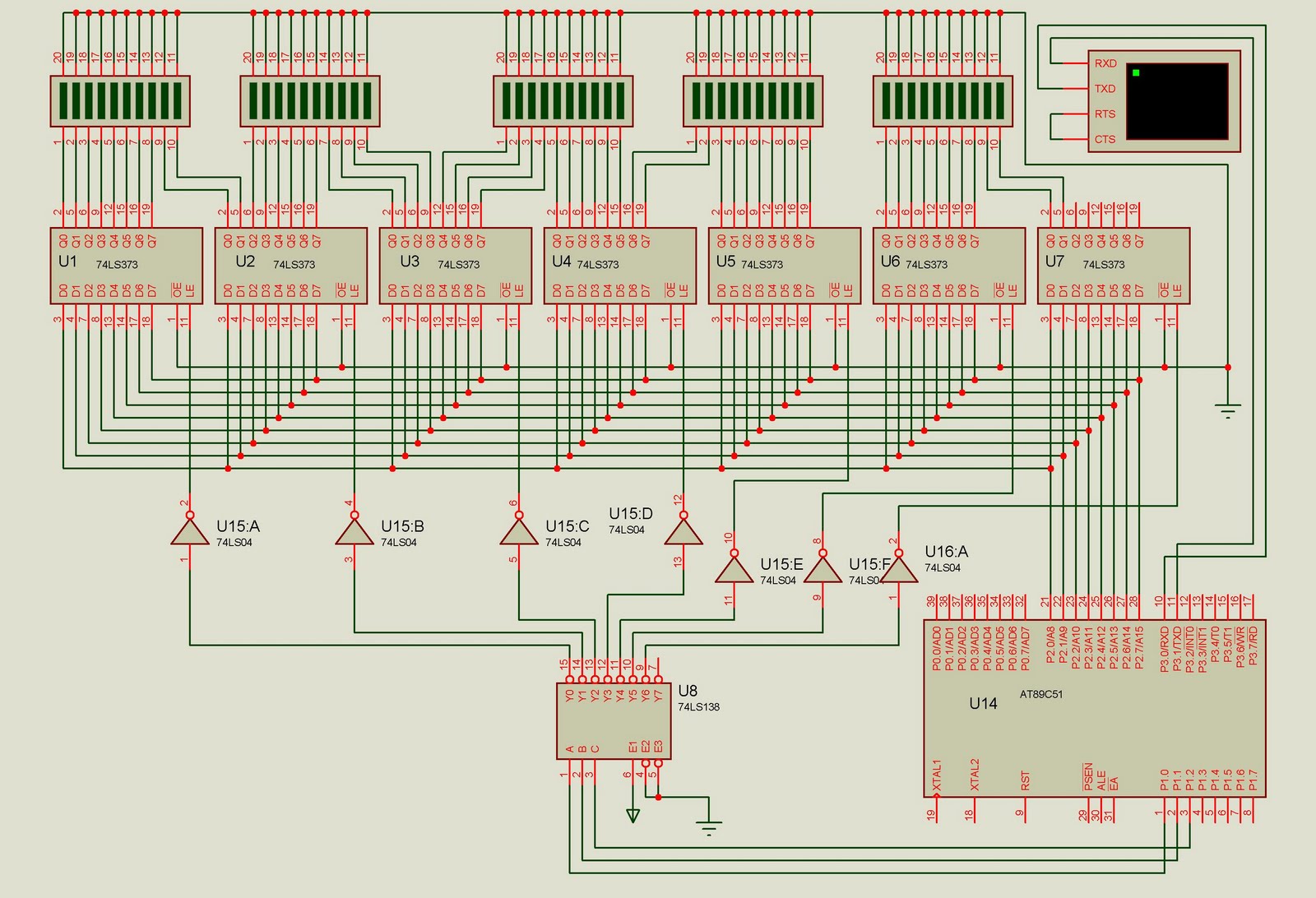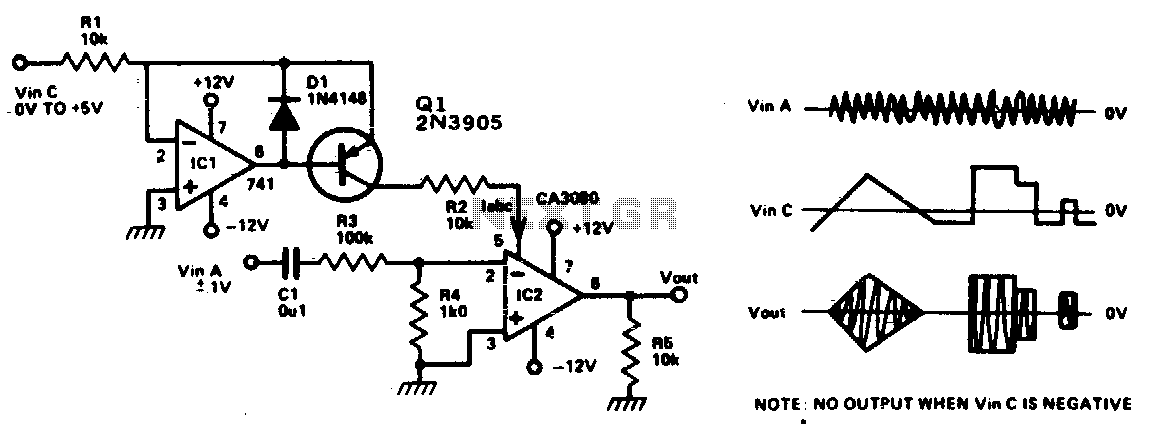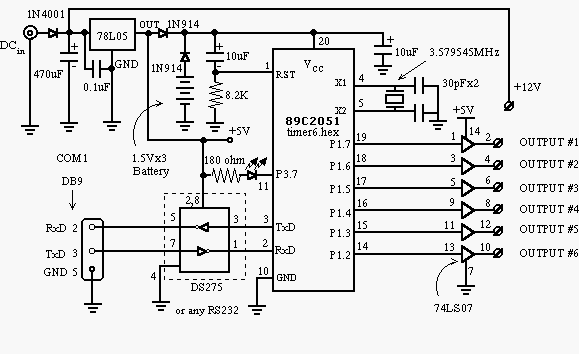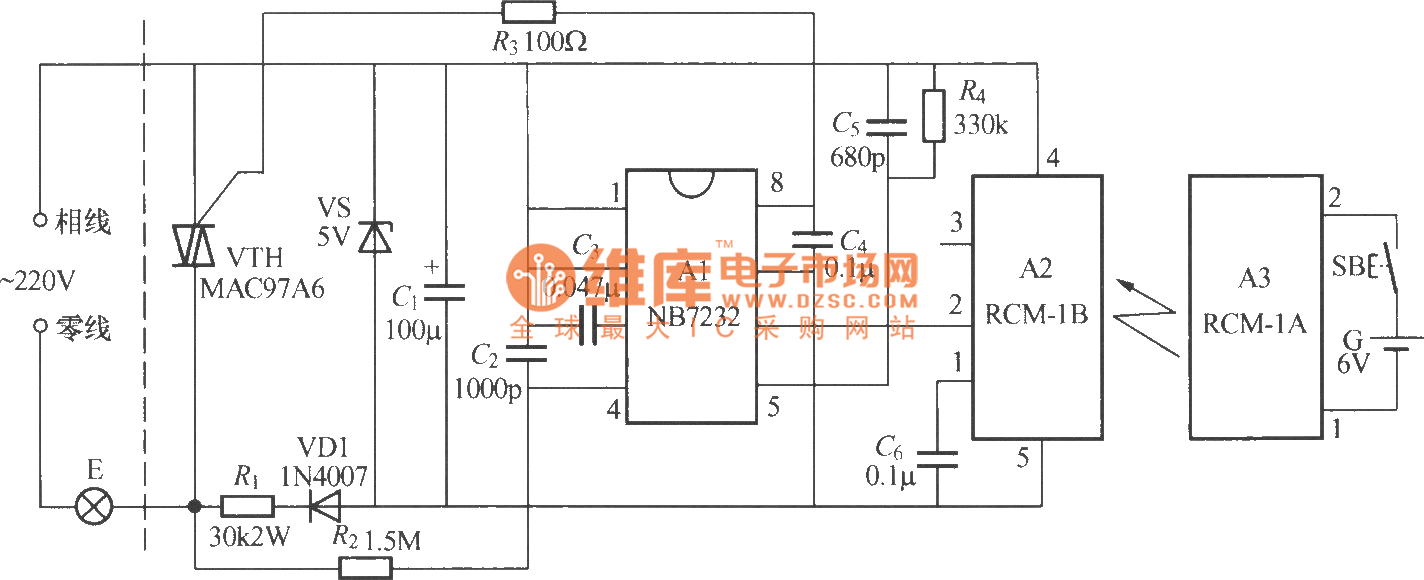
How To Build A Simple Alarm Control Keypad
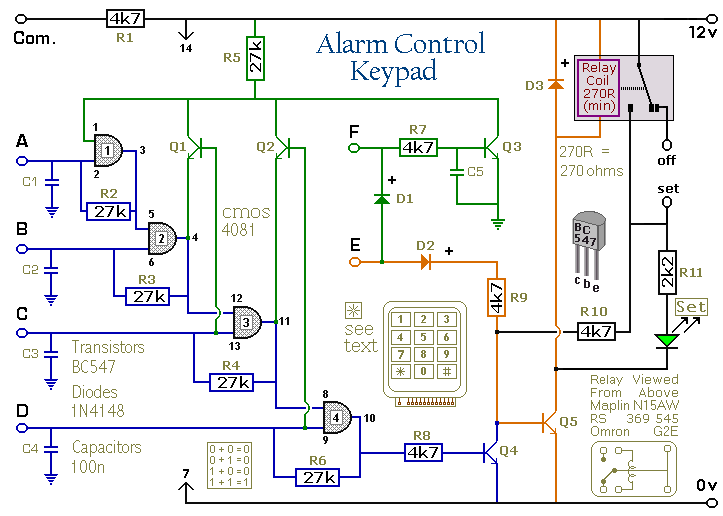
Pressing a single key on the keypad energizes the relay. Entering a four-digit code of your choice de-energizes the relay. The circuit was designed to control the Modular Burglar Alarm System but can have other applications. A five-digit version of the circuit is also available for added security. The keypad must be of the type with one common terminal and a separate connection for each key. A 12-key pad should have 13 terminals, as a matrix type with 7 or 8 terminals will not suffice. The Support Page contains details on how to create your own keypad. The relay is energized by pressing a single key, which should be connected to terminal "E". The four keys chosen for the security code should be connected to terminals "A", "B", "C", and "D". The common lead connects to "R1", while all remaining keys connect to "F". When "E" is pressed, the relay energizes, and the 12-volt output shifts from the "off" to the "set" terminal, illuminating the green LED to visually indicate that the alarm is activated. Pressing keys "A", "B", "C", and "D" in the correct sequence de-energizes the relay, returning the 12-volt output to the "off" terminal and extinguishing the green LED, indicating that the alarm is deactivated. Keys not connected to "A", "B", "C", "D", or "E" are wired to "F". Pressing any of these "wrong" keys results in a failed code entry and resets the code entry sequence. The same reset occurs if "C" or "D" is pressed out of sequence. If "C" is pressed before "B" or "D" before "C", the code entry fails, and the sequence resets. With a 12-key pad, over 10,000 different codes are possible. For greater security, a larger keypad can be employed, with a 16-key pad offering over 40,000 different codes. If an error occurs during code entry, the process can be restarted. The support materials for this circuit include a step-by-step guide for constructing the circuit board, a parts list, a detailed circuit description, and more.
The described circuit operates as a simple yet effective security mechanism utilizing a keypad to control a relay, which in turn can activate or deactivate a modular burglar alarm system. The design emphasizes user interaction through a straightforward four-digit code entry system, ensuring ease of use while maintaining security. The relay's operation is contingent upon the correct sequence of key presses, with a specific key designated to initiate the activation process (terminal "E").
To enhance functionality, the circuit allows for a customizable security code by permitting users to choose any four keys from the keypad for the deactivation process. This flexibility is crucial for adapting the system to different user preferences or security needs. The use of a common terminal for the keypad simplifies wiring and reduces potential errors during assembly, while the requirement for 13 terminals ensures compatibility with standard 12-key keypads.
The visual feedback provided by the green LED is an important feature, as it informs users of the system's status—activated or deactivated. This indicator serves as a deterrent to potential intruders, as it clearly shows whether the alarm is armed. The inclusion of incorrect key handling—where pressing any key not designated for the code resets the sequence—adds an additional layer of security, preventing unauthorized attempts to gain access.
For users seeking heightened security, the option to utilize a five-digit code or a larger 16-key keypad expands the number of possible combinations exponentially. This scalability makes the circuit suitable for various applications beyond just burglar alarms, including access control systems or other security-related uses. The comprehensive support materials provided ensure that users can successfully construct and implement the circuit, making it accessible even to those with limited electronics experience.Pressing a single key on the keypad - will energize the relay. Entering a four-digit code of your choice - will de-energize the relay. The circuit was designed to control the Modular Burglar Alarm System - but it will have other applications. If you require added security - A Five-Digit Version - of the circuit is also available. The Keypad must b e the kind with one common terminal - and a separate connection for each key. On a 12-key pad - look for 13 terminals. The matrix type with 7 or 8 terminals will NOT do. On the Support Page you`ll find details of how to Make Your Own Keypad. The relay is energized by pressing a single key. Choose the key you want to use - and connect it to terminal "E". Choose the four keys you want to use for your security code - and connect them to "A B C & D". Wire the common lead to R1- and all the remaining keys to "F". When you press "E" the relay energizes - and the 12-volt output moves from the "off" to the "set" terminal. The green LED also lights. It provides a visual indication that the alarm is set. When you press keys "A B C & D" in the right order - the relay de-energizes - and the 12-volt output returns to the "off" terminal.
The green LED is also extinguished - to indicate that the alarm is switched off. The remaining keys - those not wired to "A B C D & E" - are connected to "F". Whenever one of these "Wrong" keys is pressed - the attempted code entry fails - and the code entry sequence is reset. The same thing happens if "C" or "D" is pressed out of sequence. If "C" is pressed before "B" - or "D" is pressed before "C" - the attempted code entry will fail. And the code entry sequence will reset. With a 12-key pad - over 10 000 different codes are available. If you need a more secure code - you could simply use a bigger keypad with more "Wrong" keys wired to "F".
A 16-key pad gives over 40 000 different codes. If you make a mistake while entering the code - simply start again. The Support Material for this circuit includes a step-by-step guide to the construction of the circuit board - a parts list - a detailed circuit description - and more. 🔗 External reference
The described circuit operates as a simple yet effective security mechanism utilizing a keypad to control a relay, which in turn can activate or deactivate a modular burglar alarm system. The design emphasizes user interaction through a straightforward four-digit code entry system, ensuring ease of use while maintaining security. The relay's operation is contingent upon the correct sequence of key presses, with a specific key designated to initiate the activation process (terminal "E").
To enhance functionality, the circuit allows for a customizable security code by permitting users to choose any four keys from the keypad for the deactivation process. This flexibility is crucial for adapting the system to different user preferences or security needs. The use of a common terminal for the keypad simplifies wiring and reduces potential errors during assembly, while the requirement for 13 terminals ensures compatibility with standard 12-key keypads.
The visual feedback provided by the green LED is an important feature, as it informs users of the system's status—activated or deactivated. This indicator serves as a deterrent to potential intruders, as it clearly shows whether the alarm is armed. The inclusion of incorrect key handling—where pressing any key not designated for the code resets the sequence—adds an additional layer of security, preventing unauthorized attempts to gain access.
For users seeking heightened security, the option to utilize a five-digit code or a larger 16-key keypad expands the number of possible combinations exponentially. This scalability makes the circuit suitable for various applications beyond just burglar alarms, including access control systems or other security-related uses. The comprehensive support materials provided ensure that users can successfully construct and implement the circuit, making it accessible even to those with limited electronics experience.Pressing a single key on the keypad - will energize the relay. Entering a four-digit code of your choice - will de-energize the relay. The circuit was designed to control the Modular Burglar Alarm System - but it will have other applications. If you require added security - A Five-Digit Version - of the circuit is also available. The Keypad must b e the kind with one common terminal - and a separate connection for each key. On a 12-key pad - look for 13 terminals. The matrix type with 7 or 8 terminals will NOT do. On the Support Page you`ll find details of how to Make Your Own Keypad. The relay is energized by pressing a single key. Choose the key you want to use - and connect it to terminal "E". Choose the four keys you want to use for your security code - and connect them to "A B C & D". Wire the common lead to R1- and all the remaining keys to "F". When you press "E" the relay energizes - and the 12-volt output moves from the "off" to the "set" terminal. The green LED also lights. It provides a visual indication that the alarm is set. When you press keys "A B C & D" in the right order - the relay de-energizes - and the 12-volt output returns to the "off" terminal.
The green LED is also extinguished - to indicate that the alarm is switched off. The remaining keys - those not wired to "A B C D & E" - are connected to "F". Whenever one of these "Wrong" keys is pressed - the attempted code entry fails - and the code entry sequence is reset. The same thing happens if "C" or "D" is pressed out of sequence. If "C" is pressed before "B" - or "D" is pressed before "C" - the attempted code entry will fail. And the code entry sequence will reset. With a 12-key pad - over 10 000 different codes are available. If you need a more secure code - you could simply use a bigger keypad with more "Wrong" keys wired to "F".
A 16-key pad gives over 40 000 different codes. If you make a mistake while entering the code - simply start again. The Support Material for this circuit includes a step-by-step guide to the construction of the circuit board - a parts list - a detailed circuit description - and more. 🔗 External reference
